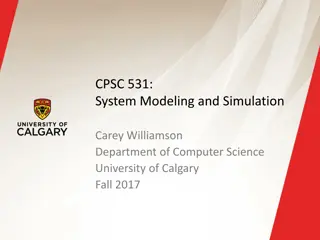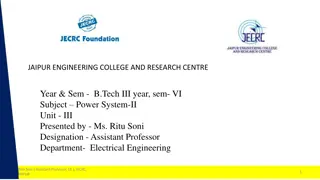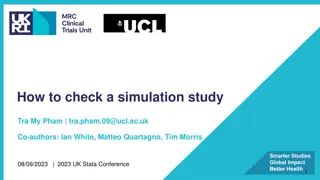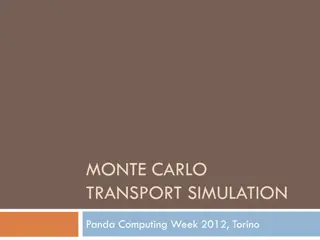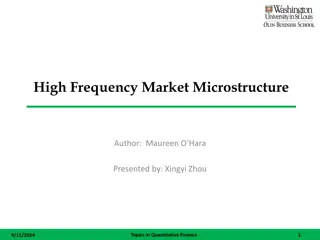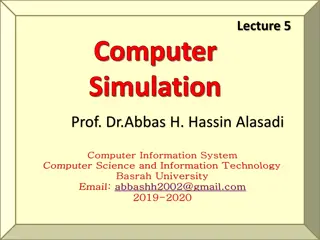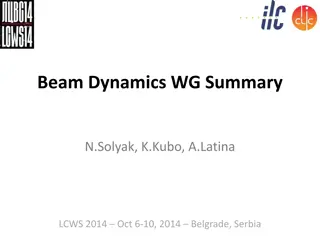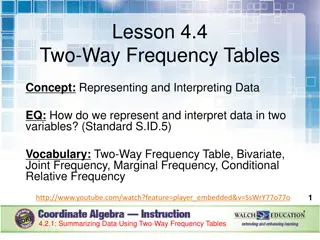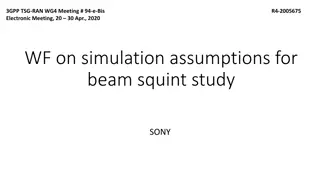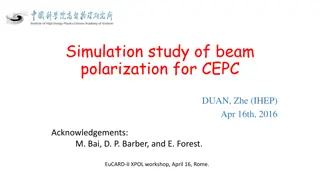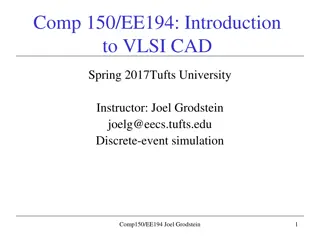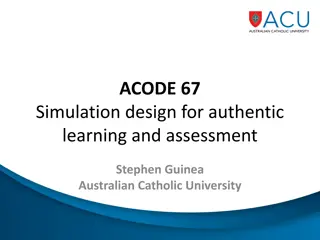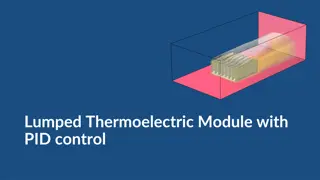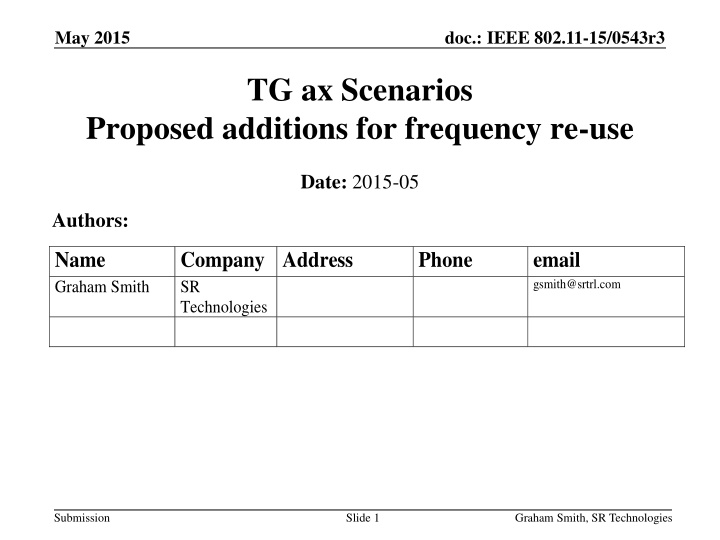
Enhancing Frequency Reuse in Wireless Networks
Exploring proposed additions for frequency reuse in IEEE 802.11 networks, this document discusses scenarios and technologies aimed at improving channel allocations for better throughput and efficiency. Various factors impacting channel reuse, such as area size, available channels, and selection methods, are highlighted. The potential benefits of technologies like DSC in enhancing frequency reuse are explored through channel allocation details and apartment sharing scenarios.
Download Presentation

Please find below an Image/Link to download the presentation.
The content on the website is provided AS IS for your information and personal use only. It may not be sold, licensed, or shared on other websites without obtaining consent from the author. If you encounter any issues during the download, it is possible that the publisher has removed the file from their server.
You are allowed to download the files provided on this website for personal or commercial use, subject to the condition that they are used lawfully. All files are the property of their respective owners.
The content on the website is provided AS IS for your information and personal use only. It may not be sold, licensed, or shared on other websites without obtaining consent from the author.
E N D
Presentation Transcript
May 2015 doc.: IEEE 802.11-15/0543r3 TG ax Scenarios Proposed additions for frequency re-use Date: 2015-05 Authors: Name Graham Smith Company Address SR Technologies Phone email gsmith@srtrl.com Submission Slide 1 Graham Smith, SR Technologies
May 2015 doc.: IEEE 802.11-15/0543r3 Background Present scenario details do not include channel allocations that allow frequency re-use technologies to be fully evaluated This presentation and accompanying document 15/0544r0 propose changes to document 14/980 to add to the scenarios such that DSC and related technologies that attempt to improve frequency reuse can be better simulated and evaluated. Submission Slide 2 Graham Smith, SR Technologies
May 2015 doc.: IEEE 802.11-15/0543r3 Channel Re-use DSC and related technology is perceived to increase the channel reuse across an area and hence increase the total throughput of that area. Hence, some of the factors that are important are: The area size The more possibility of channel reuse The number of available channels Allocated in managed networks Random selection or intelligent selection in unmanaged networks 20, 40MHz, 80MHz. Adaption and sharing Submission Slide 3 Graham Smith, SR Technologies
doc.: IEEE 802.11-15/0543r3 Channel Allocations 5GHz 5170 MHz 5330 MHz 5490 MHz 5710 MHz 5735 MHz 5835 MHz 104 108 120 136 140 149 153 157 161 165 100 124 128 132 144 112 116 IEEE channel # 20 MHz 40 MHz 80 MHz 36 40 44 48 52 64 56 60 160 MHz Ref:Wikipedia USA 21 10 4 1 Eu Japan 19 23 9 10 4 5 2 2 China 13 6 3 1 Korea 21 10 5 2 25 20MHz Channels 12 40MHz Channels 6 80MHz Channels 2 160MHz Channels Frequency re-use schemes such as DSC can take advantage of the use of multiple channels. Submission
Mar 2014 doc.: IEEE 802.11-15/0543r3 Apartment Sharing 14/0328r2 # Apartments Channel BW with Channels selection - DSC # Apartments Channel BW with Channel Selection Channels 20 19 13 10 9 6 3 40MHz 20MHz 100 100 100 Channels 20 19 13 10 9 6 3 40MHz 20MHz 100 100 96 32 45 58 1 2 x 20MHz 3 x 20MHz 4 x 20MHz 5 x 20MHz 6 x 20MHz 7x20MHz 8x20MHz 4 100 100 100 82 68 53 10 0 2 32 0 18 6 56 10 12 7 8 # Apartments Channel BW with Random Channels selection - DSC # Apartments Channel BW with Random Channels selection Channels 20 19 13 10 9 6 3 40MHz 20MHz 65 63 43 35 34 22 0 2 x 20MHz 25 27 32 32 34 42 0 3 x 20MHz 4 x 20MHz 5 x 20MHz 6 x 20MHz 7x20MHz 8x20MHz 9x20MHz 10 10 22 3 3 9 24 4 3 4 10 Channels 20 19 13 10 9 6 3 40MHz 20MHz 2 x 20MHz3 x 20MHz 96 4 96 4 93 4 8 3 10 3 20 6 32 21 3 30 23 8 0 89 87 74 35 18 14 24 27 8 Potential reduced OBSS with DSC BUT does require availability of channels Submission Slide 5 Graham Smith,
May 2015 doc.: IEEE 802.11-15/0543r3 Proposed Edits for Residential Scenario Residential Scenario Operating channel: Proposed Text Changes A - 2.4GHz: random assignment of 3 20MHz non-overlapping channels B - 5GHz: random assignment of [3], 5, 80MHz non-overlapping channels, with random selection of primary channel per operating channel. C - 5GHz: random assignment of 10, 40 MHz non-overlapping channels, with random selection of primary channel per operating channel D - 5GHz: intelligent assignment of 10, 40 MHz non-overlapping channels, with random selection of primary channel per operating channel Note: Intelligent selection entails looking for free channel then only if no free channel available, select one already in use. Submission Slide 6 Graham Smith, SR Technologies
May 2015 doc.: IEEE 802.11-15/0543r3 Enterprise Scenario Four 80MHz channels 1 3 1 3 2 4 2 4 1 3 1 3 2 4 2 4 1 3 1 3 2 4 2 4 1 3 1 3 2 4 2 4 Potential OBSS 4-6 overlaps Is this better with DSC? Nine 40MHz channels 1 4 7 1 2 5 8 2 3 6 9 3 1 4 7 1 2 5 8 2 3 6 9 3 1 4 7 1 2 5 8 2 Potential OBSS reduced Is this better with DSC? Submission Slide 7 Graham Smith, SR Technologies
May 2015 doc.: IEEE 802.11-15/0543r3 Enterprise Scenario Enterprise Scenario Channel allocation Proposed Text Changes 5GHz: A - Four 80 MHz channels (Ch1, Ch2, Ch3, Ch4) The channel distribution can be: Ch1: BSS 4k-3 Ch2: BSS 4k-2 Ch3: BSS 4k-1 Ch4: BSS 4k k=1~8, is the office index. B - Nine 40MHz channels arranged across the 8 Offices as shown below: 1 4 7 1 2 5 8 2 3 6 9 3 1 4 7 1 2 5 8 2 3 6 9 3 1 4 7 1 2 5 8 2 Submission Slide 8 Graham Smith, SR Technologies
May 2015 doc.: IEEE 802.11-15/0543r3 Indoor Small Scenario 13/1290r1 HIDDEN STA CELLS DSC and 7 channel re-use 37 Cells in CCA Area N STAs per cell N STAs in Cell1 6N STAs in Cells 2 12N STAs in Cells 3 18N STAs in Cellls 4 0 Hidden cells for Cell1 7 Hidden cells for Cells 2 14 Hidden cells for Cells 3 21 Hidden cells for Cells 4 2 3 Cells 1, 2 and 3 64 QAM Cells 4 16 QAM 4 ~24 extra cells @ QPSK 64 QAM Limit 16 QAM Limit Use of 7 channel re-use pattern Showed potential for area gain Submission Slide 9 Graham Smith, SR Technologies
May 2015 doc.: IEEE 802.11-15/0543r3 Indoor Small Scenario Add Figure 7a to cover case for frequency reuse 7. 4 6 3 6 7 5 7 1 5 2 5 4 3 2 1 2 3 6 4 4 7 6 3 5 7 6 5 1 7 2 5 4 1 1 3 4 2 2 6 4 7 3 3 7 6 5 6 7 5 1 2 2 4 5 1 3 2 4 3 6 7 Figure 7a Layout of BSSs channel allocations in case of 7 channel reuse. Submission Slide 10 Graham Smith, SR Technologies
May 2015 doc.: IEEE 802.11-15/0543r3 Indoor Small Scenario Add Reuse 7 and wall loss. With 10m cell radius and a topology of 180m across the assumption of no obstruction losses is not realistic. It is proposed to add a simple wall loss for each cell wall. ADD Reuse 7 STAs are placed randomly (uniform distribution) within the 61 cell area that covers the reuse 7 pattern in Figure 7a. STA identifies which (of the 61) APs from which it receives the highest power (based on distance-based pathloss and shadowing). If the corresponding AP does not yet have N1 STAs associated to it, then STA associates to it; else STA is removed from the simulation. This process is repeated until each of the co-channel APs has exactly N1 STAs associated to it. Channel Model PL(d) = 40.05 + 20*log10(fc/2.4) + 20*log10(min(d,10)) + (d>10) * 35*log10(d/10) + 7*W d = max(3D-distance [m], 1) fc = frequency [GHz] W = number of cell walls traversed Primary Channels 5GHz: A- 80 MHz BSS [Reuse 3] or reuse 1 Per each 80MHz use same primary channel across BSSs B- 40 MHz BSS Reuse 7 Per each 40MHz use same primary channel across BSSs Submission Slide 11 Graham Smith, SR Technologies
May 2015 doc.: IEEE 802.11-15/0543r3 Outdoor Large BSS scenario Outdoor Large BSS Scenario Center Frequency, BW and primary channels Delete: Frequency reuse 1 is used. 5GHz A- All BSSs are using the same 80MHz channel [Same Primary channel] B- BSSs use 40MHz channels with reuse 7 2.4GHz All BSSs are 20MHz BSS on same channel Submission Slide 12 Graham Smith, SR Technologies
May 2015 doc.: IEEE 802.11-15/0543r3 Straw Poll Do you agree that the proposed text as per 15/0544 r0 for frequency re-use be added to the Simulation Document 14/980? Y/N/A Submission Slide 13 Graham Smith, SR Technologies
May 2015 doc.: IEEE 802.11-15/0543r3 Straw Poll Do you agree to add to the Spec Framework Document: 5.2 Frequency Re-Use The amendment shall include one or more mechanisms to improve frequency re-use by adjustment of the sensitivity and/or CCA threshold levels. Yes No Abst Submission Slide 14 Graham Smith, SR Technologies

